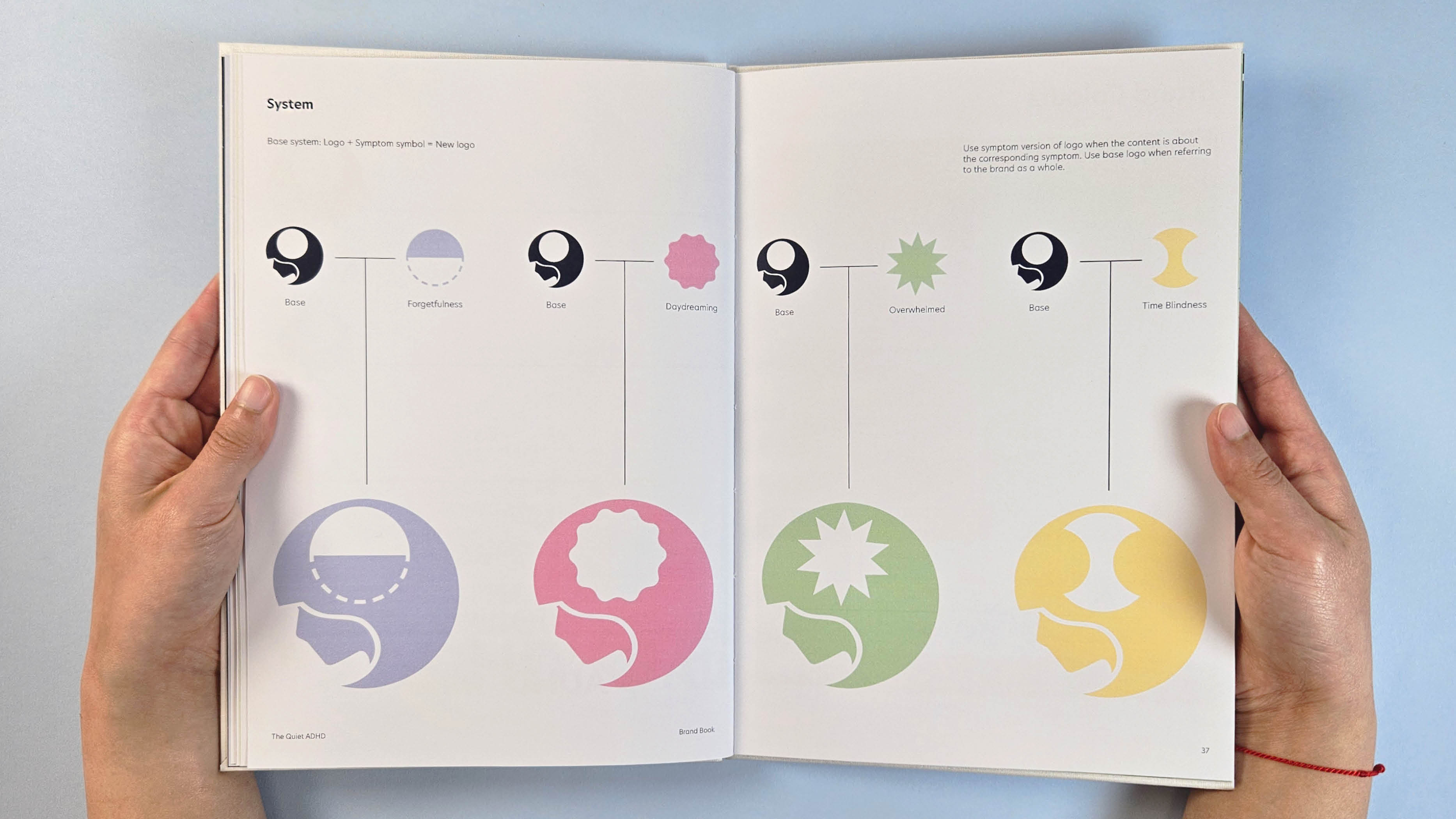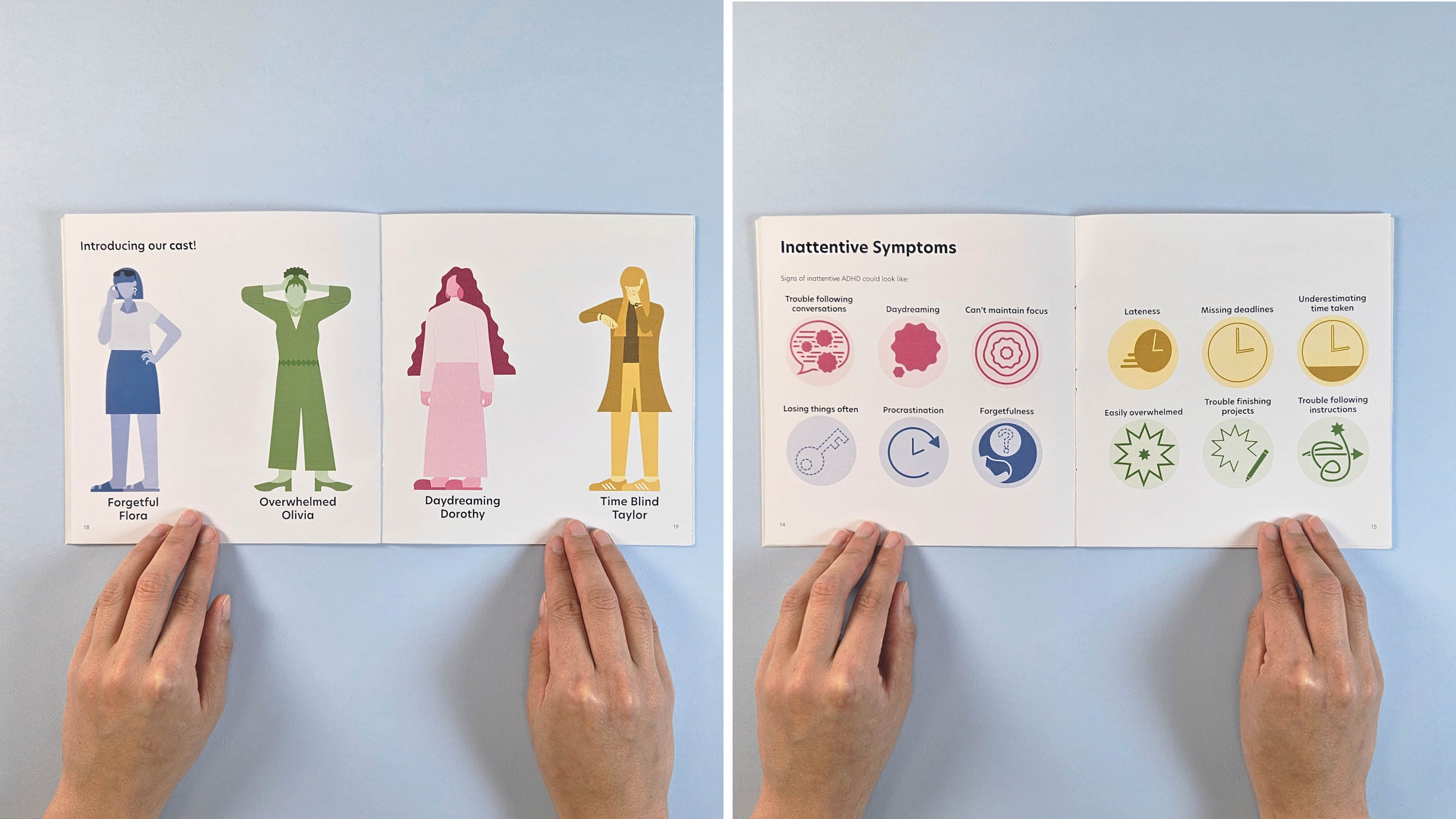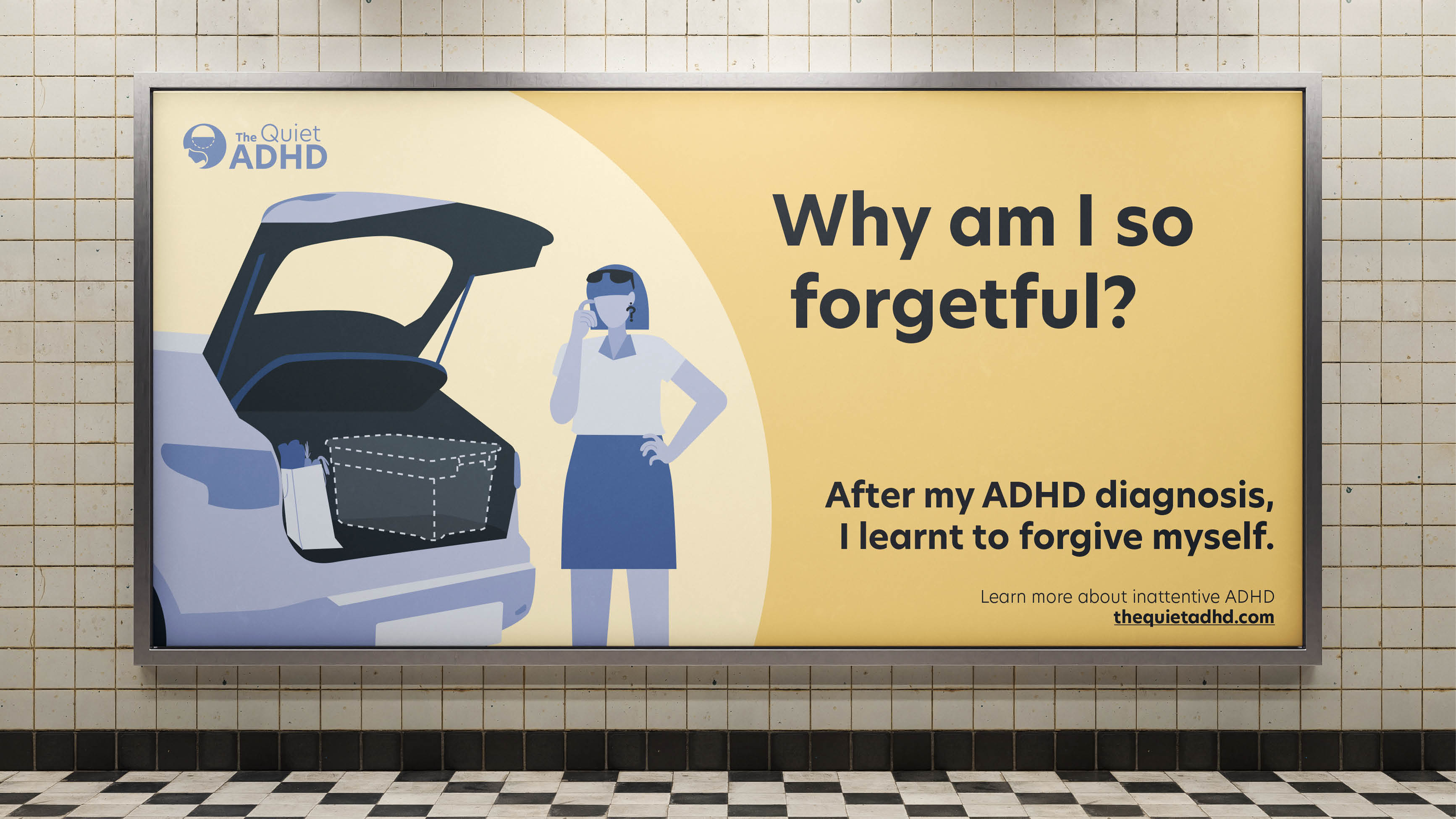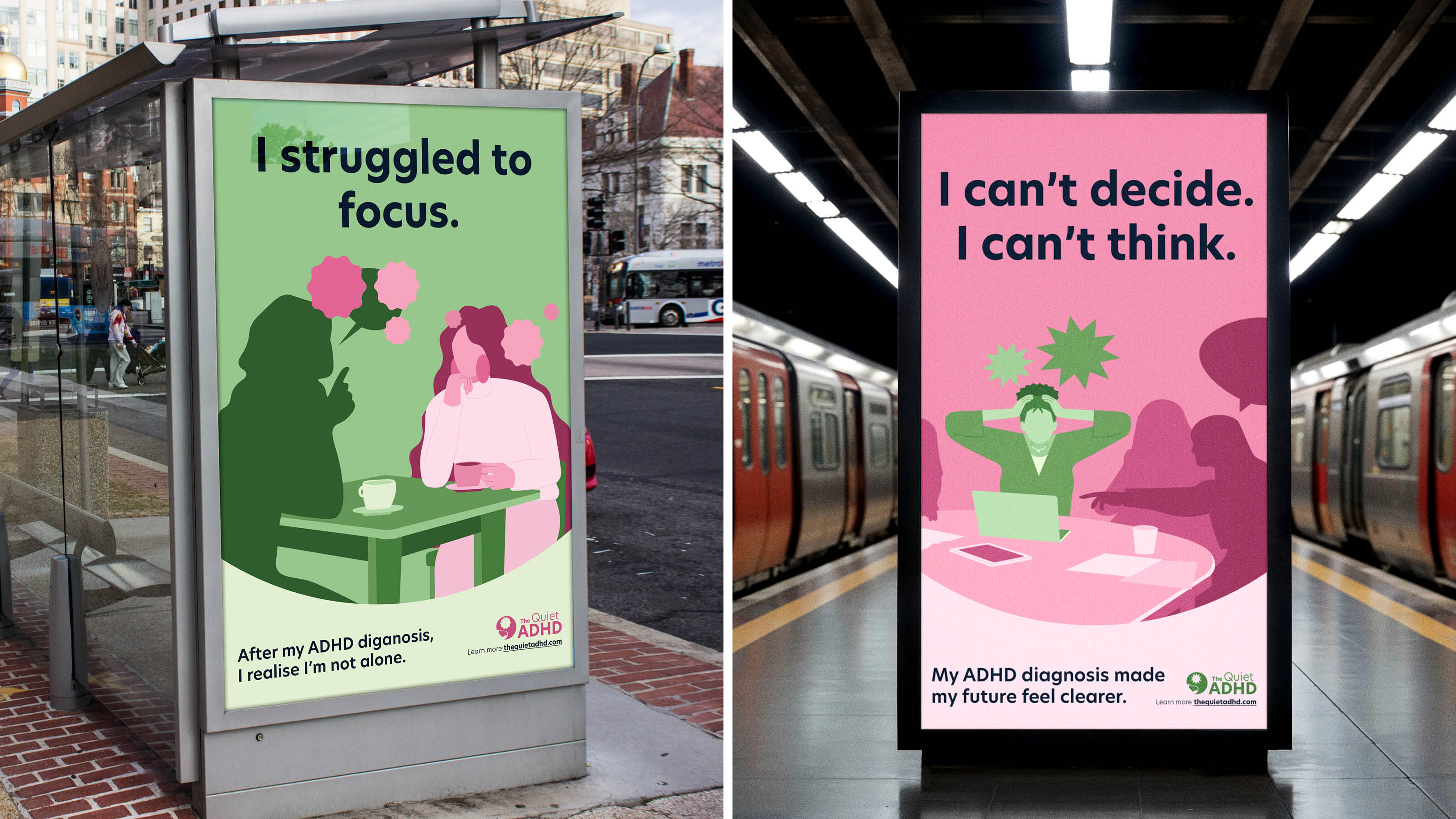
Selina Gee
The Quiet ADHD
https://miro.com/app/board/uXjVJblzwb8=/?share_link_id=305527561993
A character driven campaign
The Quiet ADHD is a campaign that spreads awareness of inattentive ADHD, especially in women, since they are often overlooked and diagnosed later in life compared to men. Undiagnosed women struggle in silence for decades, believing they are inadequate in their studies, jobs or relationships. This campaign aims to help these women recognise their own symptoms and feel seen, heard and supported.
I chose four major symptoms of inattentive ADHD, which influenced the character's designs, brand colours, and the dynamic visual identity system. By selecting four key symptoms, the campaign moves forward with focused and purposeful design.
The campaign is driven by characters and the lived experiences of other ADHD women, tapping into the relatability factor. I personified the symptoms into illustrated characters with names and visuals that match my target audience to stimulate connection. Illustrations used real stories to ground the symptoms in the real world, and spark better recognition of symptoms compared to a list of text. There are not enough ADHD campaigns in general, but even fewer that target adults or use illustrations to support comprehension. This is a small contribution that hopes to give undiagnosed women the life-changing support that I got, but a little sooner.
The Quiet ADHD is a campaign that spreads awareness of inattentive ADHD, especially in women, since they are often overlooked and diagnosed later in life compared to men. Undiagnosed women struggle in silence for decades, believing they are inadequate in their studies, jobs or relationships. This campaign aims to help these women recognise their own symptoms and feel seen, heard and supported.
I chose four major symptoms of inattentive ADHD, which influenced the character's designs, brand colours, and the dynamic visual identity system. By selecting four key symptoms, the campaign moves forward with focused and purposeful design.
The campaign is driven by characters and the lived experiences of other ADHD women, tapping into the relatability factor. I personified the symptoms into illustrated characters with names and visuals that match my target audience to stimulate connection. Illustrations used real stories to ground the symptoms in the real world, and spark better recognition of symptoms compared to a list of text. There are not enough ADHD campaigns in general, but even fewer that target adults or use illustrations to support comprehension. This is a small contribution that hopes to give undiagnosed women the life-changing support that I got, but a little sooner.




